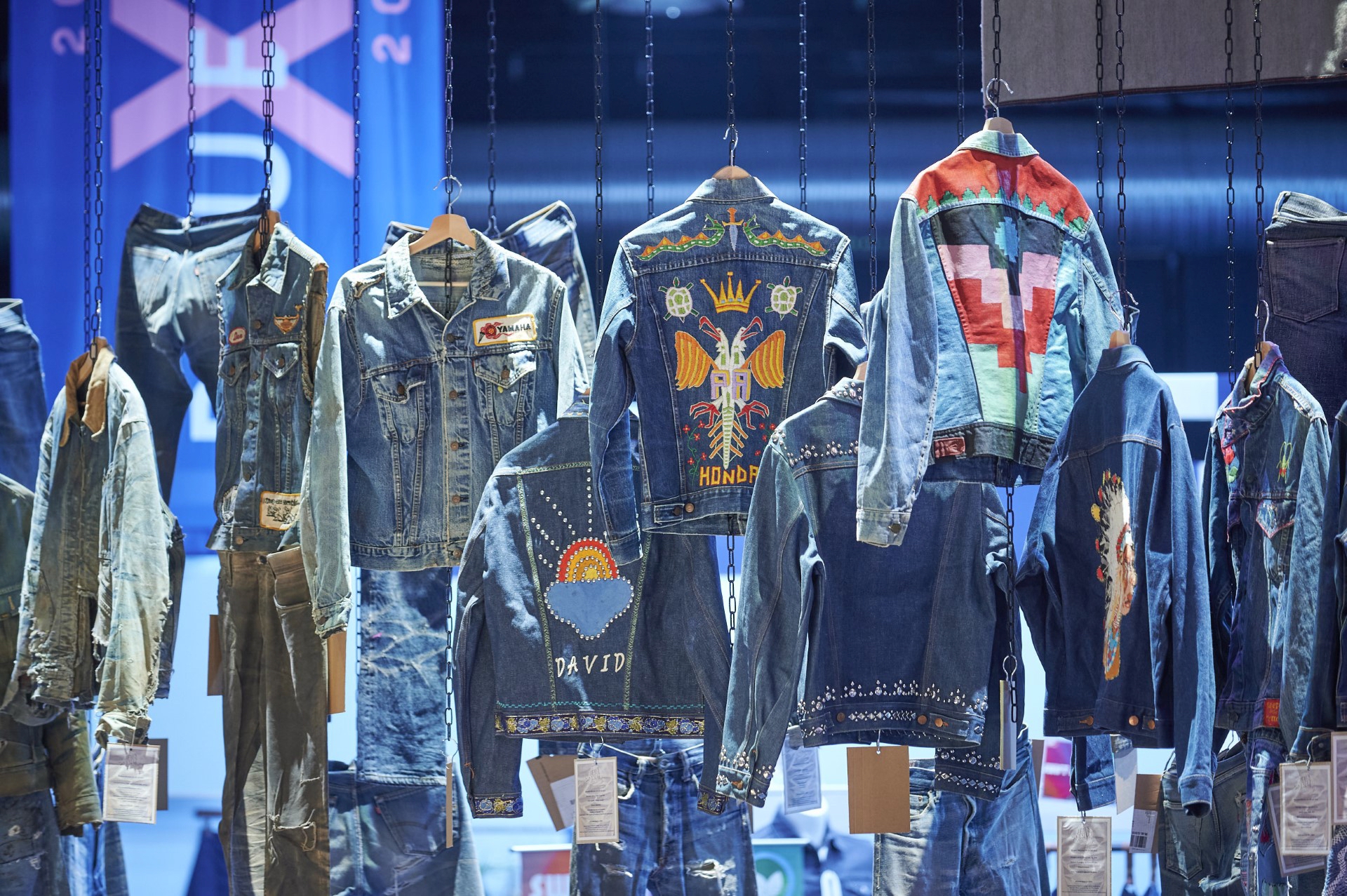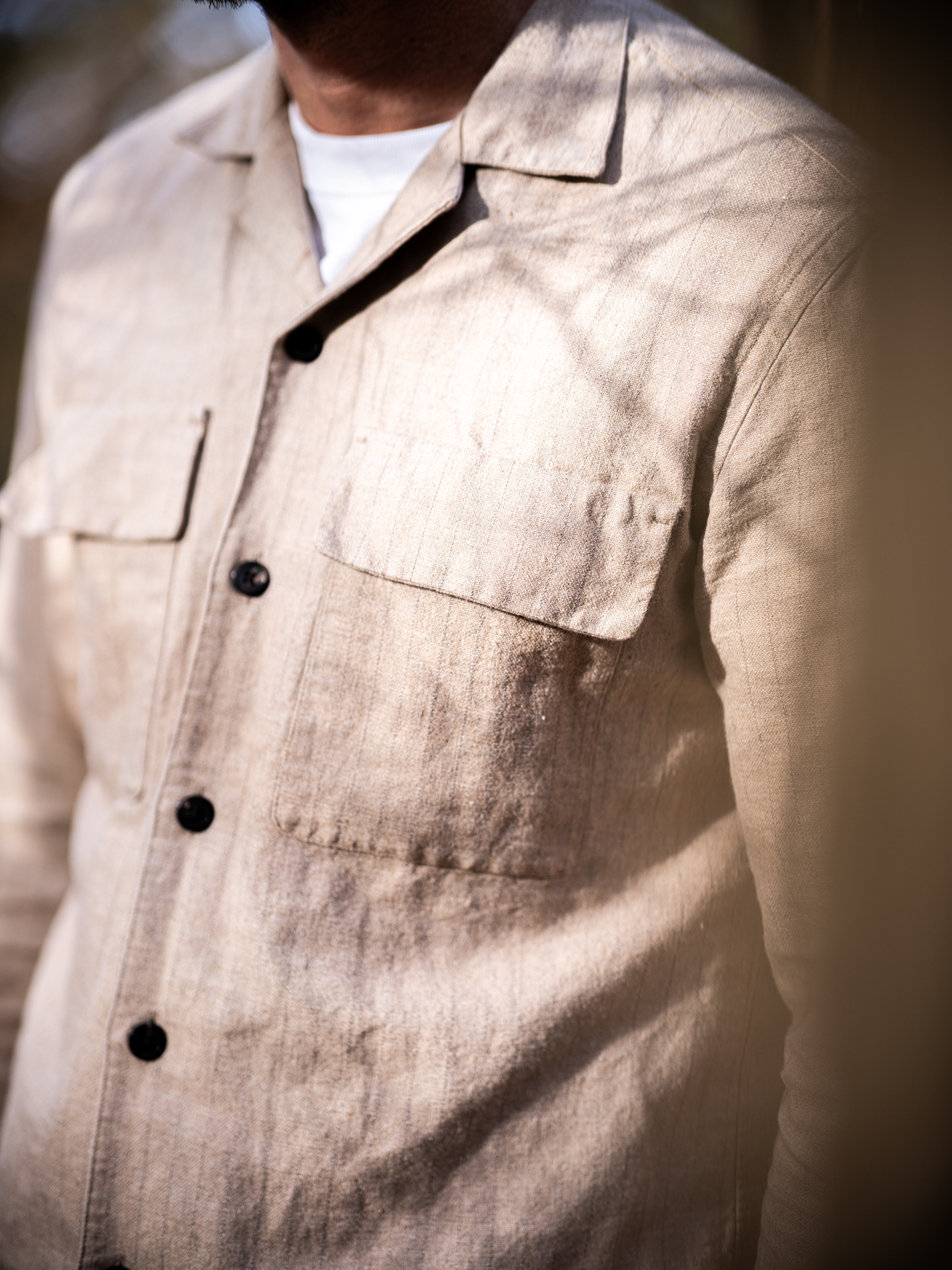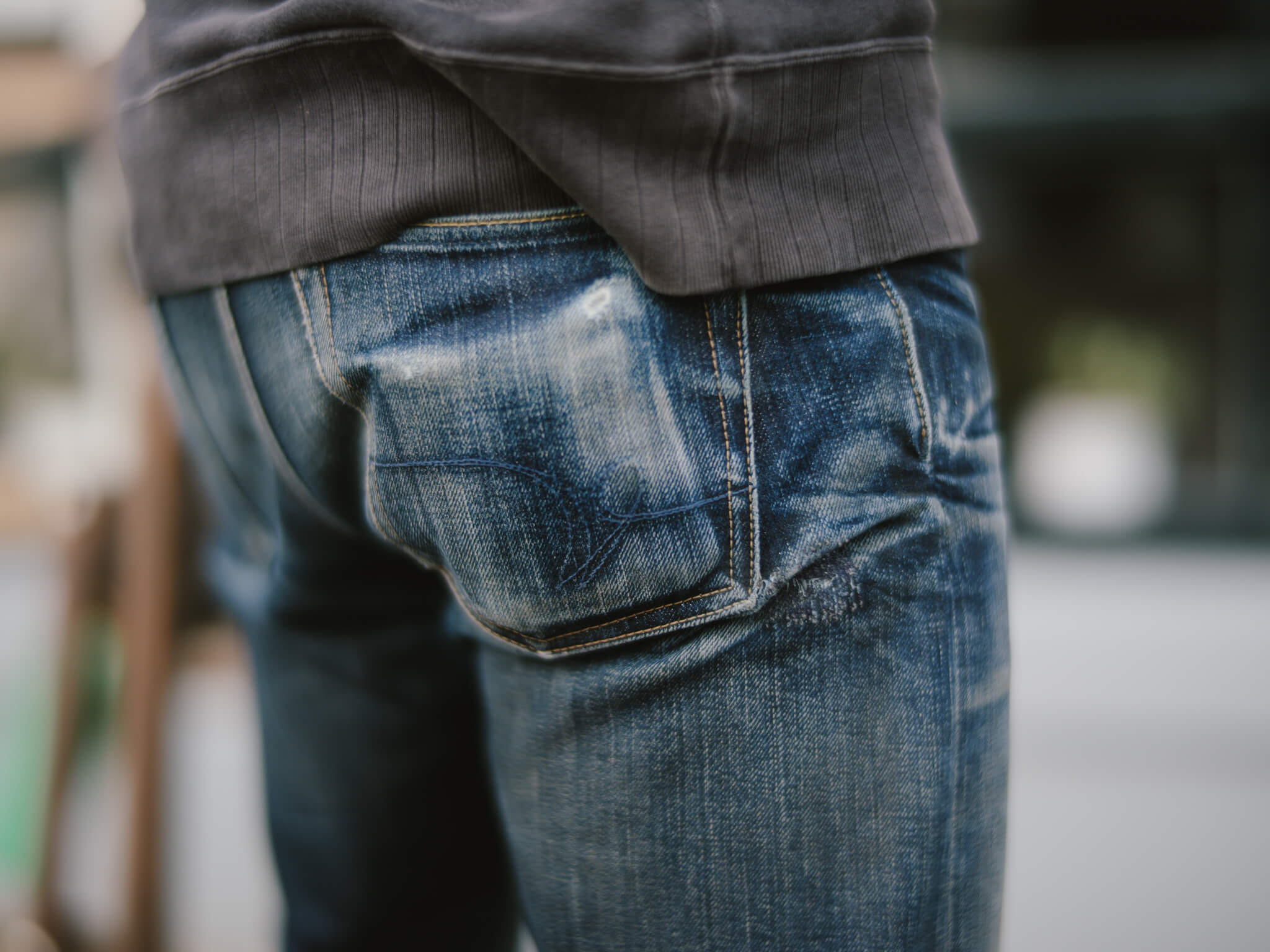Ten Years of Japan Blue Jeans: In Conversation With Mr Kishimoto
This year Japan Blue Jeans are celebrating their ten year anniversary, which is a huge milestone for a brand that started out as the household brand of a Japanese fabric manufacturer. During the last ten years the brand has grown step by step and today is considered one of the best Japanese denim brands. Japan Blue Jeans continue to operate out of the heart of Kojima but are known the world over for their iconic blue jeans.
The man behind the success story of Japan Blue Jeans is Mr Kishimoto, who is the Managing Director of the brand. It was Mr Kishimoto who started the brand in order to really showcase the quality of Japanese denim combined with innovative design and smart details.
Last week, we sat down (digitally) with Mr Kishimoto to look back on the last ten years of Japan Blue Jeans, discussing the different chapters of the brand’s history. It was a privilege to hear it from the man himself and understand the inner workings of the brand’s development. We hope you enjoy this as much as we did. Arigatō Mr Kishimoto for your time!
 Mr. Kishimoto is standing on the right. Photo courtesy of Koen Kuik.
Mr. Kishimoto is standing on the right. Photo courtesy of Koen Kuik.
Robin Denim (RD): Mr Kishimoto, it has been a while since we last spoke. How are you? And, for people who don’t know who you are, can you please start by introducing yourself?
Kishimoto (K): Hi Robin, it’s been a while! My team and I are doing well, thanks! Japan Blue Jeans is growing step by step, and year after year, and I am very grateful for that.
For people who don’t know me, I am Kishimoto, and I am the director of Japan Blue Jeans. I joined Collect Mills, when I was 23 years old. At that time Collect was just a small textile maker – which was entering the market quite late – and wasn’t able to produce jeans at all. But we did produce special fabrics that major companies didn’t make. In the 13 years that followed, I experienced the entire process at Collect; planning, production, sales, and I learned everything about threads, dyeing and weaving.
At one point we went to ‘Denim by Première Vision’ and we brought jeans samples to sell our fabrics. During and after the show, we received many requests from people who wanted these samples. These requests encouraged us to start Japan Blue Jeans and I have been involved from that very first moment.
RD: Japan Blue Jeans are celebrating their ten year anniversary – congratulations! Looking back on those ten years, what is the first thought that comes to mind?
K: Thank you Robin! Before we launched our first collection, I started the preparations. So, including the ‘prep’ time, I have been working on Japan Blue Jeans for eleven years. The first few years after we launched the first collection I was almost never in Japan. I visited as many retailers as I could, because I wanted to meet them in person and I wanted to hear all their stories firsthand. I remember that during those first few years I didn’t go back home more than two or three times a year.
The internet (including Google Maps) wasn’t as developed as it is today, so I was constantly on the move with a paper map, traveling from store to store. I remember that everyone welcomed me with open arms and they were so kind to me. I really appreciate those great experiences and I still have great relationships with many of those store owners.
RD: From the beginning you focused on the overseas market (Europe & USA) while many Japanese brands build their reputation in Japan. Why did you choose this strategy?
K: The first and foremost reason is that we wanted people from overseas markets to get to know our fabrics. We started to export our fabrics during a time that jeans from these kinds of fabrics were selling at €1000 and obviously only a very few people wore them. I strongly believed (and I still do) that the fabrics from Collect are the best in the world, so I wanted people to get to know our fabrics by giving them the opportunity to buy our jeans. After we started selling our jeans in the overseas market, we received inquiries from Japanese retailers little by little. Today, Japan is a very important market for us and we are well-represented with five ‘flagship’ stores, one franchise store, and over 200 retailers in Japan.
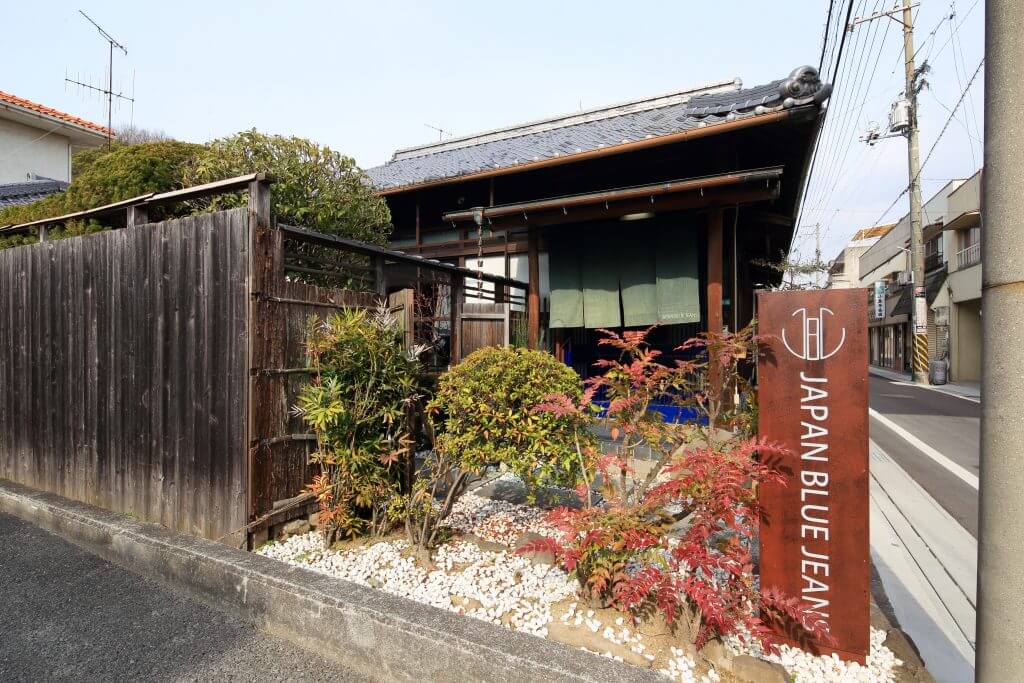 Japan Blue Jeans flagship store in Kojima.
Japan Blue Jeans flagship store in Kojima.
RD: So Japan Blue Jeans really began as your business card to sell fabrics, and today the brand is available in only Japan in over 200 stores? Wow. Looking back on the past ten years, what have been some of the highlights for you?
K: I started the brand by myself and now our team includes 30 passionate people. One of the triggers was the opening of our first flagship store in Kojima, which was quite a big thing! We established the Kojima store in a renovated traditional Japanese house (named a ‘Kominka – 古民家’), which is loved by people from Japan and abroad. I am still very proud of the team that made this store happen.
Another highlight is that we replaced our regular jeans collection with ‘CIRCLE’, which took place two years ago. Both our customers and ourselves loved our regular jeans offering, so we were quite concerned about replacing it. But, we did it, and now I know for sure it was a good decision. I was very worried about the introduction, but we received lots of compliments and good reactions from our customers. I think that it might bring a new wind to the raw denim world.
I’d also like to highlight the development and introduction of our Sashiko fabrics. In the beginning we avoided Sashiko, because we thought it to be too ‘classic’ Japanese. One day we decided to take a fabric with us to an exhibition and the feedback was great, so much better than expected. So we decided to introduce Sashiko to our collection and since then it has become one of the main fabrics for Japan Blue Jeans.
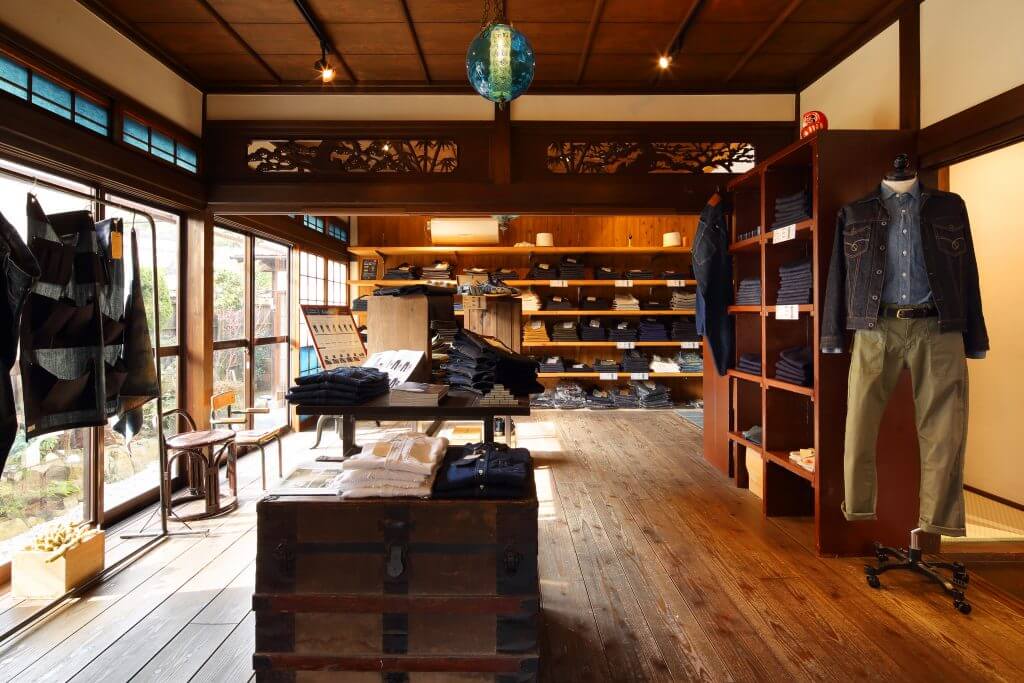 Japan Blue Jeans flagship store in Kojima.
Japan Blue Jeans flagship store in Kojima.
RD: Looking back on the last ten years, did things go exactly as planned with Japan Blue Jeans?
K: The last ten years passed me by without even noticing. I never thought about ‘what would Japan Blue Jeans be like in 10 years’. I’m sure that our beautiful fabrics are not known everywhere and sometimes I think that I should have done more during this time, but these are our challenges for the future!
RD: Did your approach to being a denim brand change during the last ten years? Has your design approach changed since the brands inception? Where does your inspiration come from?
K: When we started the brand we tried to equal the specifications of vintage denim, meaning that all our designs were inspired by vintage jeans. As we went along, we realized that these specifications were originally derived for work clothing and were not suited to the current era. So, we began to utilise the good parts of vintage denim, but we also started to change our designs to match the current era. Soon after, ‘Circle’ was born and we continue to improve a contemporary fit, while honoring the heritage of (vintage) denim.
Japan Blue Jeans is not trying to achieve a ‘rugged’ aesthetic of the classic American brands. But we are trying to continuously improve the silhouettes, adding beauty where beauty can be added. We make things by combining the goodness of vintage with the technology that suits the present.
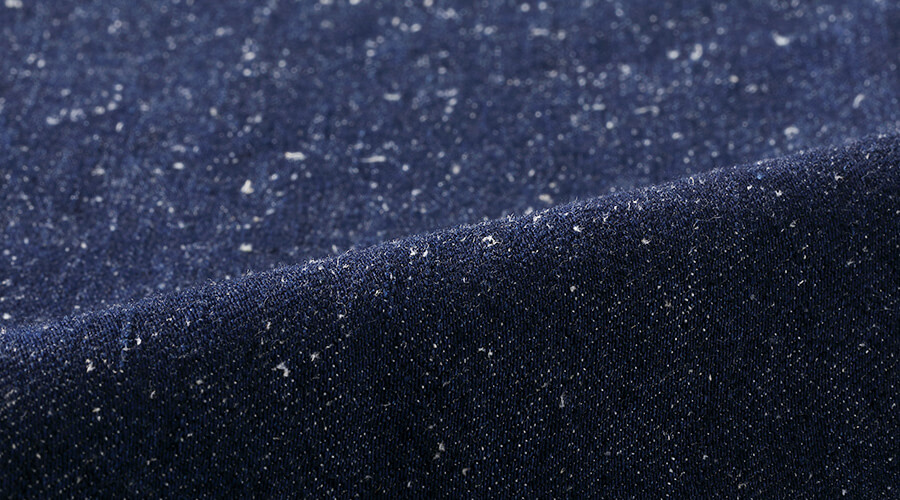 Banana Denim by Japan Blue Jeans.
Banana Denim by Japan Blue Jeans.
RD: Speaking about change and time, compared to 10 years ago the world changed dramatically. Digitization has become second nature and sustainability is more than just a trend. How do you approach big topics like this and how does Japan Blue Jeans keep up-to-date?
K: Yes, times have changed dramatically. At Japan Blue Jeans we are fully focused on the ethical production of denim. We try to reduce our impact on the environment as much as we can, for example by reducing the use of water and chemicals or by making use of Fairtrade materials.
However, in many ways ‘Made in Japan’ already represents a high level of environmental responsibility and some of the highest labor standards in the world. But it needs to be said that there hasn’t been much change lately. Dramatic improvements are expected in countries with low wages, but ‘Made in Japan’ carries an expense because it costs money to maintain the high environmental and labor standards that are already in place. Of course, we are still working on areas that could be improved, but we mainly try to communicate what we have been doing so far!
RD: Speaking of cost, we all know that Japanese denim and ‘Made in Japan’ garments can be expensive. How do you manage to continue to release high quality garments at a more accessible price point?
K: In order to maintain the high standards of the Japanese denim industry, factory wages are increasing year by year. When we look at the price of our products, they may increase little by little. But we will continue to manufacture products that our customers love and at a price they will be satisfied with. Of course, the same as at other factories, the wages in our factories are increasing. But, by increasing the production volume as much as possible, we are trying to keep our prices competitive.
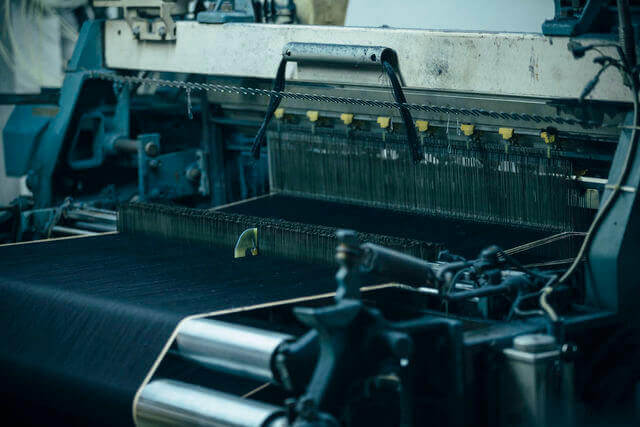
A Shuttle Loom at Collect Mills. Photo courtesy of Koen Kuik.
RD: Many of the brand’s fabrics are custom-made, including signature details like a unique selvedge ID. How would you characterize your fabrics?
K: Circle – our jeans collection – includes four different fabrics. These fabrics are characterized by being hard and soft at the same time, while being distinctive in color and simplicity. Most of our fabrics are made of Côte d’Ivoire cotton, a type of denim fabric which is currently only available at Japan Blue Jeans. This cotton, also named ‘Origin of Cotton’, comes very close to the original cotton that was used to weave denim back in the day.
When we look a hundred years back, it’s easy to see that no one treated their jeans with special care. They were workwear. People wore a pair of jeans and washed them when they were dirty. And the jeans still looked super cool from this honest wear. And well, Côte d’Ivoire cotton allows us to create a denim fabric with the same properties as the denim back then. You can just wear it and wash it without any special treatments or care, and it will still turn out beautiful!
RD: You have already mentioned the Circle jeans a few times, but what is so special about this collection and their manufacture? Will this be the future of Japan Blue Jeans?
K: Circle is a fusion of vintage jeans and modern technology. Like I explained earlier, this has now replaced our regular collection of jeans. We wanted to improve the classic five pocket jean – which was obviously a hard job, because the design is already perfect! – but by challenging it and continuing to look for added value, we eventually developed a new model. The curved waistband is one of the biggest features. Since the human body exists of curved lines, we wanted to add curved parts to our jeans in order to make them fit better. As a result of pursuing ease of wearing and mastering a beautiful silhouette, we developed the Circle collection. As denim trends are constantly changing, Circle will be continuously developing in order to evolve with time and trends.
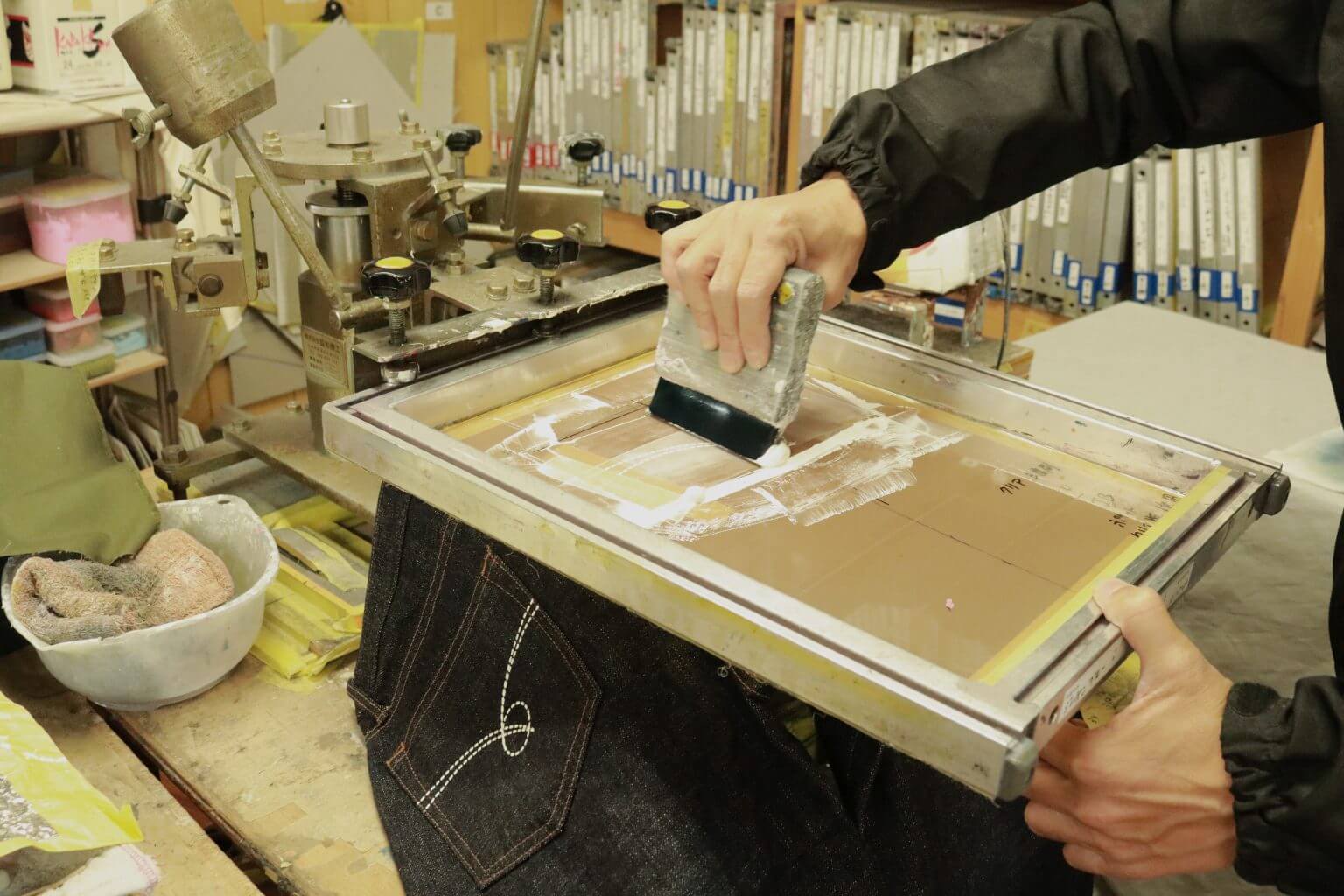 Photo courtesy of Japan Blue Jeans.
Photo courtesy of Japan Blue Jeans.
RD: We have heard that there are special items being released to celebrate the tenth anniversary of the brand. Can you give us a little sneak peek or share anything with us?
K: Yes, later this year we will launch some anniversary items to pay attention to our tenth birthday. These items will exhibit our fabric know–how, our experience and our techniques. We promise you that these items will be super special, but you will have to be a little more patient, as we will share all the details from April 1st 2021. All we can say for now is that the collection will include two pairs of jeans and a jacket.
For those fans who cannot wait, it might be helpful to create an account and subscribe to our newsletters, which can be done here. Via our newsletter we will give some special anniversary information to our subscribers only!
RD: We’ve never been good with patience, but we’ll do our best! Last question as we wrap things up; what do you expect from the next ten years? What will Japan Blue Jeans look like in 2031?
K: I have no idea! I couldn’t imagine ‘now’ ten years ago and I cannot imagine ten years from now. By that time I will be 55 years old! I certainly want to be a man who looks better in jeans than I do today. In ten years I would like to wear JBJ’s latest models and have fun! For the rest: we’ll see in ten years!
With Japan Blue Jeans we continue to grow through trial and error. We are constantly trying new styles and approaching new challenges. There’s nothing more I can share with you right now, however I’m sure that with fabrics like Côte d‘Ivoire cotton and Banana denim, as well as our Circle line, we will bring some interesting denim concepts to the market in the near future!
 Share
Share
 Tweet
Tweet

